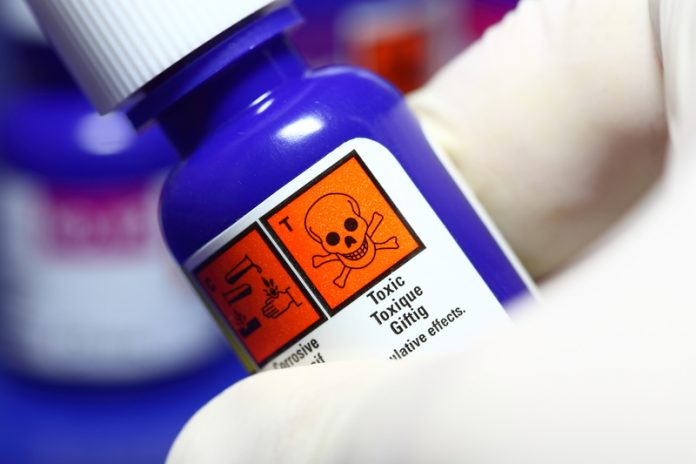Mikael Khan, Director of Technology at Arvia Technology lifts the lid on Endocrine Disrupting Chemicals (EDCs) in our water supplies
With such a heavy focus on plastic pollution in our water by the media, it’s easy to ignore what lies beneath the surface.
Chemical waste seeping into the environment is becoming more difficult to tackle in modern times, and knowledge surrounding the subject is still developing.
The latest chemicals which have come under scrutiny for their potentially dangerous effects are known as Endocrine Disrupting Chemicals (EDCs), and they are found in an alarming number of everyday products. Up to now, they have been found in electronics, plastics, pesticides, cosmetics, toys, food containers and antibacterials.
Worryingly, approximately 1,000 chemicals have been reported to potentially have endocrine disrupting effects with many of these commonly found in various consumer products which are available to buy on the shelves.
The chemicals can mimic the body’s natural hormones and ‘disrupt’ the endocrine system, which is one of two main regulatory systems in the body, consisting of glands that secrete hormones which are carried in the bloodstream around the body.
These hormones help to control bodily functions such as reproduction, growth, and development. EDCs are exogenous substances that change the functions of the endocrine system, affecting the way an organism or its offspring reproduces, grows, or develops.
The list of health issues which the substances have been linked to is extensive and includes asthma, obesity, diabetes, reproductive abnormalities and infertility. Worryingly, some research suggests that EDCs could even be linked to cancer.
Identifying the scale of the problem
The first step towards eliminating these chemicals from the production process is identifying which chemicals can be classified as EDCs.
Before any legislation can begin to provide companies with the necessary push to comply with EDC usage and disposal rules, the full extent of our exposure to EDCs must be realised. Luckily, steps are being taken in the right direction to identify EDCs.
The UN recently released a list of chemicals which had been through at least one “thorough scientific assessment”, having been identified as potential EDCs. The list comprised 45 substances under 18 chemical groups including phthalates, bisphenols and parabens.
Policymakers are also taking steps in the right direction with the introduction of regulations, such as REACH which calls for the registration, evaluation, authorisation and restriction of chemicals.
Threatening our water supplies
On a day to day basis, we can reduce exposure to EDCs by avoiding certain cosmetic products, eating foods without pesticides and even making sure rooms are properly vacuumed and ventilated as chemicals are found in dust.
Along with exposing ourselves to dangerous chemicals through the use of everyday products such as pesticides and cosmetics, we are also inadvertently contaminating our water supplies. Contamination of water by consumers occurs through the excretion of waste material from the body, as a large majority of the products are not fully metabolised.
For example, a large number of cosmetics are washed into our water supplies when we shower and then become difficult to treat.
In relation to the chemical industry, wastewater effluent from chemical manufacturing sites is also a major contributor to polluting the environment with EDCs. Wastewater discharged from chemical manufacturing sites along with pollution downstream from manufacturing plants has been subject to increasing attention.
Due to the various ways, these contaminants are reaching our environment, river systems and waterways are now coursing with chemical waste. Often, trace levels of chemical waste are not removed by traditional treatment processes, meaning the same compounds can easily find their way into sources used for drinking water.
A holistic approach
With a problem as widespread as this, there needs to be a unified approach across the industry and from consumers. The eventual removal and replacement of dangerous chemicals is the obvious end-goal, however, in the meantime, steps must be taken to reduce our exposure to them.
The pharmaceutical industry has similar issues with wastewater effluents and it would be beneficial to see similar steps employed surrounding EDCs from all sectors.
Take-back and disposal schemes, green pharmaceuticals, eco-labels on packaging, compulsory prescription of pharmaceuticals with high environmental impact and awareness-raising are all being introduced to tackle the problem.
On a consumer level, education surrounding these dangerous chemicals is one of the most powerful tools to counteracting the problem. Fortunately, this information is steadily reaching the public sphere, with companies now offering products which are free from dangerous EDCs.
In terms of wastewater treatment, companies must use regulations as a starting point and look for further options to reduce the number of micropollutants entering the environment. It is reassuring to see the issue being raised by policymakers, putting it firmly on the political agenda.
The effects of EDCs on our bodies and the environment could be extremely damaging and wastewater treatment must form part of an industry-wide effort to counteract the problem.

Mikael Khan
Director of Technology
Arvia Technology
Tel: +44 (0)1928 515 310












Thanks for your report so clear and informative. As consumer I will keep on mind.